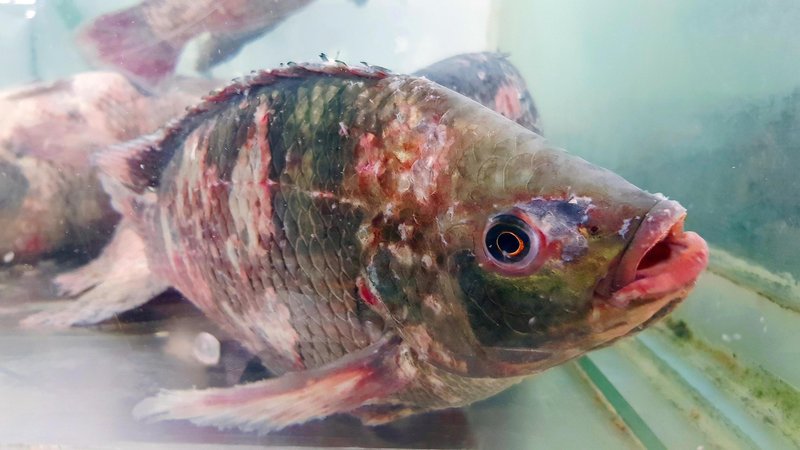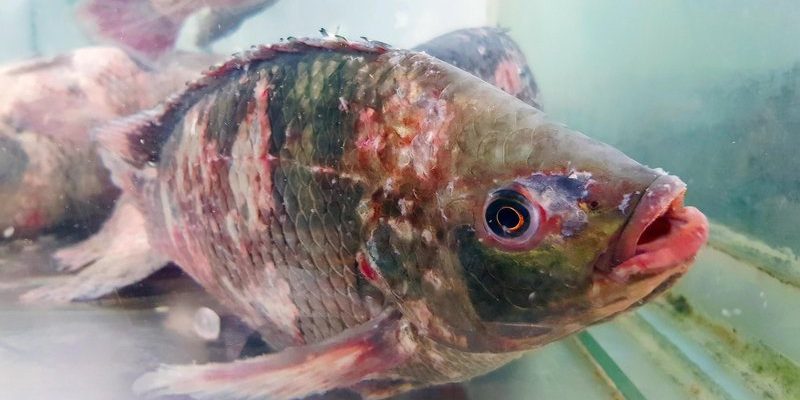
Diving into the world of tilapia health might feel daunting at first—almost like trying to navigate a maze. But trust me, it’s not as complicated as it seems. By knowing what diseases to look out for and how to prevent them, you’ll be well on your way to being a responsible tilapia caretaker. Let’s explore this together.
Understanding Tilapia Health Issues
Before we jump into the diseases themselves, it’s important to grasp the overall health of tilapia. Just like humans, fish rely on a balanced environment to thrive. This includes proper water conditions, food, and social interactions. If you think of a tilapia’s health as a three-legged stool, each leg represents these three key factors. If one leg is weak, the entire stool can wobble—leading to stress and, ultimately, disease.
Stress is often the first step toward health problems. It can be caused by overcrowding, poor water quality, or improper handling. When tilapia are stressed, their immune systems weaken, making them more susceptible to infections. So, if you want your tilapia to stay healthy, the first step is ensuring they live in a serene environment.
Common Diseases in Tilapia
Now, let’s break down some of the most prevalent diseases that can affect tilapia. Just like identifying symptoms in humans, recognizing the signs in fish is crucial for early intervention.
1. Tilapia Lake Virus (TiLV)
Tilapia Lake Virus is a significant concern and can devastate entire populations. It doesn’t discriminate; young and old fish alike can fall victim. Signs of TiLV include lethargy, erratic swimming, and even skin lesions. When you notice these symptoms, it’s critical to act fast.
This virus spreads rapidly, mainly through water. To prevent it, keep your breeding and growing systems clean. Regular monitoring is essential, too. Think of it as getting a routine check-up; catching problems early often helps.
2. Columnaris Disease
Columnaris is another sneaky disease that tilapia can face. Caused by the bacterium *Flavobacterium columnare*, this condition shows itself through white patches on the skin or fins. If untreated, it can lead to significant tissue damage and even death.
To keep your tilapia safe from columnaris, maintain good water quality. Ensure the tank is well-aerated and free from excess waste. Think of it like keeping your kitchen clean; a tidy environment makes for better health.
3. Ich (Ichthyophthirius multifiliis)
You might have heard of “Ich,” a common parasite that often shows up in freshwater fish. Symptoms include tiny white spots on the skin, resembling grains of salt. Ich can be particularly troubling for stressed fish, leading to breathing difficulties and even mortality.
The best defense against Ich is prevention through proper water management. Regular water changes and maintaining ideal temperatures will create a hostile environment for parasites. It’s similar to preventing a cold by washing your hands frequently.
Preventing Tilapia Diseases
Being proactive is key. Here’s how to set your tilapia up for success:
1. Maintaining Water Quality
Water quality is like the foundation of a house; if it’s not solid, everything else will crumble. Regularly test for pH levels, ammonia, nitrite, and nitrate levels. Keeping water clean and balanced is essential. You can use filters, aerators, and even plants to help manage this.
Make it a routine to conduct weekly checks. This not only prevents diseases but also promotes healthy growth. Trust me, your tilapia will thrive in a happy environment.
2. Proper Feeding Practices
Just like we need nutritious meals, tilapia require a balanced diet. Invest in high-quality fish feed, rich in protein and vitamins. Overfeeding can lead to poor water quality, so stick to recommended feeding schedules.
Think of it as meal prepping for the week. You want to make sure your fish have everything they need without being overwhelmed.
3. Quarantine New Fish
Introducing new fish can disturb the harmony of your tank. Always quarantine newcomers for at least two weeks before adding them to your main tank. This helps catch any potential diseases they might carry.
Treat it like getting a new roommate. You wouldn’t want to invite someone into your home without knowing they’re a good fit.
The Importance of Regular Monitoring
Honestly, one of the best things you can do for your tilapia is to keep an eye on them. Regularly observe their behavior and physical appearance. Just like you might notice a friend isn’t feeling well, paying close attention can help you spot issues early.
Consider keeping a diary to jot down observations. It can be as simple as noting changes in eating habits or movement. This allows you to spot trends and intervene before issues escalate.
Taking care of tilapia might seem overwhelming at times, but it’s all about knowledge and routine. By understanding common diseases, maintaining clean water, providing proper nutrition, and regularly monitoring your fish, you can significantly minimize health risks.
Remember, healthy tilapia not only lead to better growth rates but also a more enjoyable experience for you as a caretaker. So, keep learning, stay proactive, and your tilapia will thank you with vibrant colors and lively swims. Happy fish-keeping!

